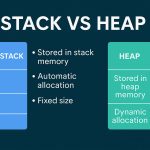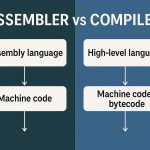What Is Prefetching?
Predicting Tomorrow’s Data, Today
What if your computer could read your mind—and get the data you’ll need before you even ask for it? That’s the basic idea behind prefetching, a powerful technique used at every level of modern computing to reduce wait times and make systems feel faster, smarter, and smoother.
From the CPU to your web browser, prefetching is about anticipation. It’s the art of guessing what data or instructions a user or process will likely need in the near future—and loading it into fast-access memory before it’s explicitly requested.
In this article, we’ll explore what prefetching is, how it works, where it’s used, common algorithms and techniques, performance trade-offs, and real-world examples. Whether you’re writing high-performance code, designing system architecture, or just wondering why your phone feels so “snappy,” this is a concept worth mastering.
What Is Prefetching?
Prefetching is a technique used in computing systems to proactively load data or instructions into faster memory based on predicted future access patterns.
In one line:
Prefetching is a predictive performance optimization that fetches data before it’s needed, reducing perceived latency.
It’s not about what you asked for—it’s about what you probably will ask for next.
Why Prefetching Matters
In modern systems, the latency gap between different types of memory is significant. If the CPU has to wait for data from main memory—or worse, from disk—it wastes valuable clock cycles.
Prefetching helps bridge this gap by:
- Reducing cache misses
- Hiding I/O latency
- Improving execution speed
- Enhancing user experience (e.g., fast page loads, smooth scrolling)
Real-World Analogy: The Smart Waiter
Imagine you’re at a restaurant. Before you finish your water, the waiter brings another glass. Before you order dessert, he’s already bringing the menu. That’s prefetching: anticipating your needs to eliminate wait time.
Where Is Prefetching Used?
| Domain | Use Case |
|---|---|
| CPU architecture | Instruction/data prefetching into cache |
| Operating systems | File system readahead |
| Web browsers | DNS, link, and image prefetching |
| Databases | Row/page prefetching during queries |
| Mobile apps | Prefetching data before user navigates |
It appears everywhere, from hardware microcontrollers to cloud-scale software.
Types of Prefetching
1. Hardware Prefetching
- Handled by CPU or memory controller
- Automatically predicts memory access patterns
- Low overhead, transparent to software
2. Software Prefetching
- Implemented in compilers, applications, or OS
- Offers more control, but requires developer effort
Common Prefetching Techniques
1. Sequential (Stride-Based) Prefetching
Assumes future memory access is sequential (e.g., A[i], A[i+1], A[i+2]...)
for (int i = 0; i < N; i++) {
__builtin_prefetch(&A[i + 1]);
process(A[i]);
}2. Spatial Prefetching
Fetches adjacent memory blocks (based on spatial locality).
3. Temporal Prefetching
Fetches data that was recently used and may be reused soon (based on temporal locality).
4. Data Structure–Aware Prefetching
Anticipates access patterns in linked lists, trees, or graphs.
5. Heuristic/Adaptive Prefetching
Uses past access behavior to inform future predictions (used in modern OS and browsers).
Copyable Formulas & Metrics
1. Prefetch Accuracy
Prefetch Accuracy (%) = (Useful Prefetches / Total Prefetches) * 1002. Coverage Ratio
Coverage = (Cache Misses Avoided by Prefetch / Total Cache Misses) * 1003. Overhead Ratio
Overhead = (Unnecessary Prefetches / Total Prefetches) * 100High accuracy, high coverage, and low overhead = optimal prefetching.
Prefetching in CPUs
Modern CPUs (Intel, AMD, ARM) have dedicated prefetchers built into their architecture.
Examples:
- L1 Data Prefetcher
- L2 Stream Prefetcher
- Instruction Prefetch Queue
These predict memory access patterns and fetch cache lines ahead of time to reduce stalls.
In Assembly:
PREFETCHT0 [eax] ; x86 prefetch to L1 cacheOperating System Prefetching
Most modern OSs implement file system readahead or page prefetching:
- Linux uses
readahead()syscall and/sys/block/*/queue/read_ahead_kb - Windows includes SuperFetch (now SysMain) to preload frequently used programs
Web Browser Prefetching
HTML Link Tags:
<link rel="prefetch" href="/next-page.html">
<link rel="dns-prefetch" href="//example.com">
<link rel="preload" href="/font.woff2" as="font">This improves user-perceived performance by loading resources before the user clicks or scrolls.
Types:
- DNS Prefetching: Resolves domain names in advance
- Link Prefetching: Loads next-page resources silently
- Preloading: Loads essential assets (fonts, JS) for rendering
Database Prefetching
Databases like PostgreSQL and Oracle use buffer pool prefetching to:
- Fetch likely-needed rows or index pages
- Avoid disk I/O during complex queries
Some databases also implement query plan–aware prefetching, using knowledge of query structure to fetch ahead.
Mobile App Prefetching (UX Pattern)
Many apps use route-based prefetching to preload data for likely navigation paths.
Example:
In React Native or Flutter:
- Fetch next-screen data in the background while user is still reading the current screen
- Combine with caching to reduce API calls
Downsides and Challenges
While powerful, prefetching isn’t free.
| Issue | Description |
|---|---|
| Incorrect predictions | Waste memory and bandwidth (pollution) |
| Increased latency | When too many prefetches create bottlenecks |
| Cache eviction | Useful data may be pushed out by useless ones |
| Energy cost | More data fetched = more battery usage on mobile |
Good prefetching requires accuracy and restraint.
Prefetching vs Caching
| Feature | Prefetching | Caching |
|---|---|---|
| When | Before data is needed | After data is accessed at least once |
| How | Predictive | Reactive |
| Goal | Avoid future misses | Avoid repeated misses |
| Risk | Can prefetch unneeded data | Can serve stale data |
Often used together: cache stores, prefetch predicts.
Optimizing Prefetching in Code
- Use sequential access patterns where possible
- Avoid random memory access in performance-critical loops
- Use compiler hints like
__builtin_prefetch() - Keep data structures compact and cache-friendly
- Minimize prefetch depth to avoid pollution
Prefetching in Machine Learning and AI
In deep learning:
- Data loaders often prefetch mini-batches during GPU training
- Frameworks like TensorFlow, PyTorch support:
dataset.prefetch(buffer_size=2)This hides data loading latency and improves GPU utilization.
Modern Use Case: Edge Prefetching in CDNs
CDNs like Cloudflare, Fastly, and Akamai are experimenting with edge prefetching—loading assets at the edge in anticipation of user navigation behavior based on ML or heatmaps.
This enables:
- Pre-rendering pages
- Pre-caching videos or images
- Seamless app transitions
Conclusion: Prefetching Is the Invisible Performance Booster
Prefetching is like having a smart assistant who always knows what you’ll want next. It’s everywhere—quietly working behind the scenes to make systems feel faster, smoother, and more intelligent.
Whether it’s your CPU guessing the next memory address, a browser loading the next page, or a neural network prefetching training data, this predictive magic is what makes the digital world feel so instant.
Knowing how and when to use prefetching—and how not to overdo it—is one of the most powerful tools in a developer’s performance toolkit.
Related Keywords:
Cache Miss
Cache Prefetcher
Data Locality
DNS Prefetch
Hardware Prefetching
Instruction Prefetch
Memory Latency
Page Readahead
Predictive Loading
Sequential Access
Software Optimization
Spatial Locality
Temporal Locality
Web Performance









